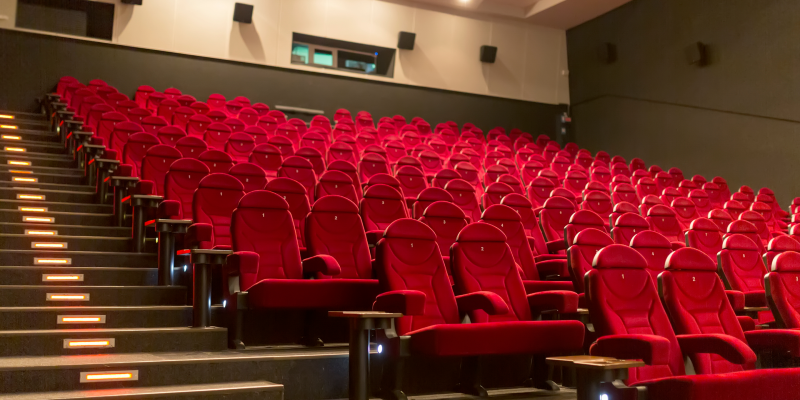Diagnosing and tackling hearing disability
A public-private-partnership (PPP) model involving the government, the private sector, and citizens can improve the campaign against deafness by ushering in a more disabled-friendly digital ecosystem.
As an “invisible disability”, hearing impairment is often neglected. In India, there are approximately 63 million people, who are suffering from Significant Auditory Impairment as per WHO estimates and the National Health Mission. This places the estimated prevalence at 6.3% in Indian population and children between the ages of 0-14 constitute a significant percentage of this population. In the case of congenital hearing loss, low awareness around identification of hearing issues in babies and delayed diagnosis, compound the problem.
Congenital hearing impairment refers to hearing disability present at birth. The ear's ability to convert sound to electrical impulses in the brain is impaired either in the womb or very shortly after birth. More than 50% of congenital deafness is thought to be due to genetic factors. Other causes include prenatal infections, illnesses, or toxins that may have been consumed by the mother during pregnancy.
Importance of early detection
The birth of a child is a time of joy for the parents. As children explore their surroundings, they respond to things they can see, touch or hear. If a child is born with a physical disability, many times it can be easily diagnosed. If a child can’t see at all, their inability to interact with visual changes in their surroundings is also easier to identify. In contrast, identifying a lack of ability to hear, in a happy and curious baby, ends up happening only when the child starts nearing or crosses their first birthday and fails to reach significant speech-related milestones.
Congenital deafness impairs a child’s ability to acquire a language. Language acquisition is the process by which humans acquire the ability to be aware of language and to understand it as well as to produce sounds or gestures in the shape of words and sentences used for communication.
Research shows that there is a "sensitive period" of language acquisition in which human infants have the ability to learn any language, generally until the age of six months. Delay in language acquisition after this age keeps increasing the challenges faced by the child in acquiring language naturally. Without early detection and intervention, children born with congenital deafness cannot start language acquisition, which can delay or permanently affect brain development.
Consequently, it affects not only language development but also has an effect on memory, and general learning ability including vocabulary, communication, intelligence, and even social skills. Early intervention includes therapies, education, and other support to help congenitally deaf children reach their full potential.
The Universal Newborn Hearing Screening (UNHS) is mandatory in most countries. The rest helps in the early detection of congenital hearing loss and ensures early intervention. The government of India also recommends that all children be screened for early detection of disabilities at birth. Under the Rashtriya Bal Swasthya Karyakram (RBSK) programme, the government recommends the creation of District level Early Intervention Centers (DEICs), for early detection and access to early intervention. The impact of disabilities on the quality of life for growing children can be minimised in this manner. The state of Kerala has even included UNHS in its list of mandatory health screening procedures for newborns.
Cochlear implants and auditory-verbal therapy (AVT)
Cochlear implants are tools that allow sound and speech to be processed and sent to the brain. The device allows deaf people to receive & process, sounds & speech, and has been globally used since the 1970s. A Cochlear Implant is an electronic medical device that replaces the function of the damaged inner ear and is recommended when a child’s hearing loss is too significant for hearing aids to be of any help. Some cochlear implants also use a combination of an implant technology and hearing aid for the same ear. It consists of an external portion that sits behind the ear and a second portion that is placed under the skin surgically.
The success of cochlear implants, however, depends on multiple factors and is not a single-time surgical intervention. But cochlear implants are not a one-stop cure for congenital deafness. Children with cochlear implants must undergo auditory-verbal therapy (AVT) which is a type of early intervention therapy for up to 2 years after surgery. AVT emphasises listening and seeks to promote the development of the auditory brain to facilitate learning to communicate through talking. This therapy allows a child to make optimal use of fitted hearing technology.
But there are some barriers
While cochlear implants and AVT help children with congenital deafness overcome their handicaps, the cost for implant device and surgery is prohibitive for most Indians. A CI procedure (device, surgery, and rehabilitation) costs about Rs. 6-7 lakhs per ear which is astronomical for average Indians. We must find ways to ensure easier access to this life-changing medical intervention for children, especially those from low-income families.
AVT costs about Rs 1.5-2 lakh a year. The cost, however, is not the only barrier in AVT. There is also a dearth of professionals trained in AVT techniques to provide better outcomes to children with CI. A child must go to therapy 2-3 times a week for 2 years post-surgery without which the device is of no use. Lack of professionals in AVT and the absence of AVT centres in tier II and III towns also restrict the wider use of CI surgery.
Ushering in a more disabled-friendly digital ecosystem
For wider detection of congenital hearing loss at the earliest, UNHS must be adopted countrywide as a routine practice. The number of trained and accredited therapists and therapy centres must be increased to ensure equitable access for all.
A public-private-partnership (PPP) model involving the government, the private sector, and citizens can improve the campaign against deafness by ushering in a more disabled-friendly digital ecosystem. The government’s national programme for the prevention and control of deafness (NPPCD) must be dovetailed with efforts of the private sector and civil society to make the battle against deafness more effective.
(Disclaimer: The views and opinions expressed in this article are those of the author and do not necessarily reflect the views of YourStory.)
Edited by Rekha Balakrishnan






